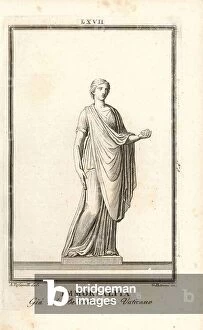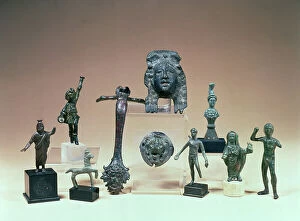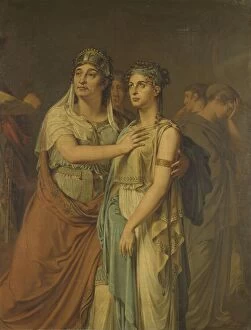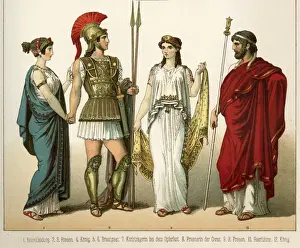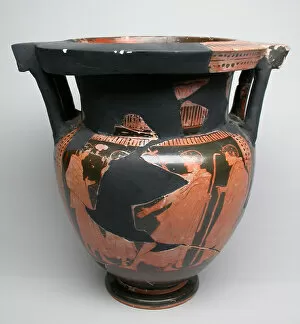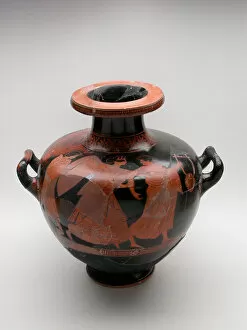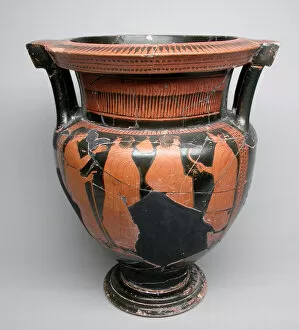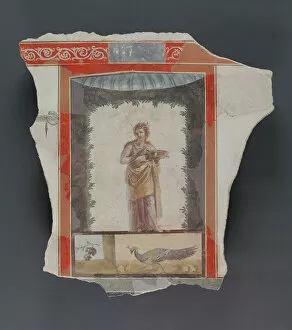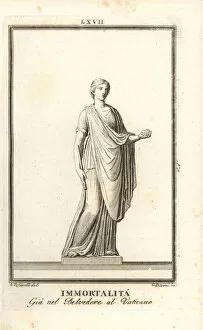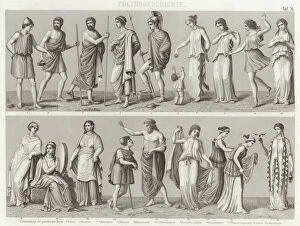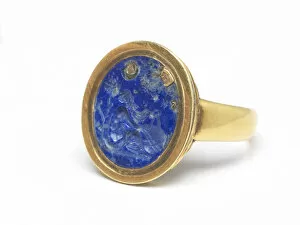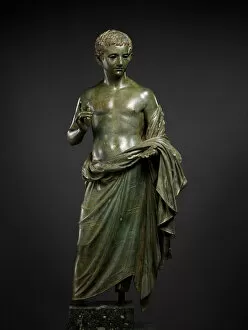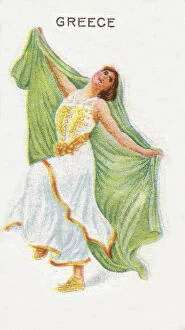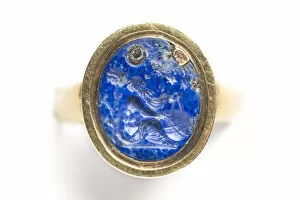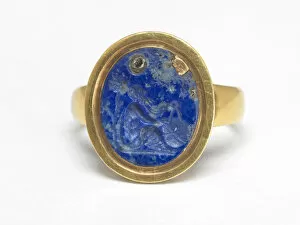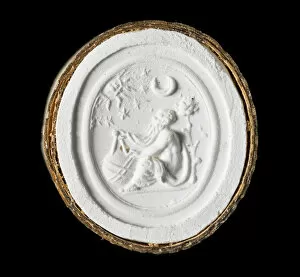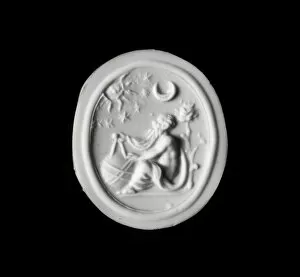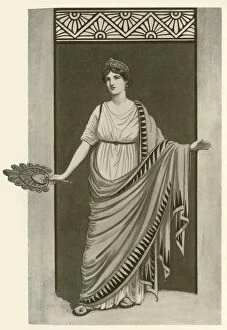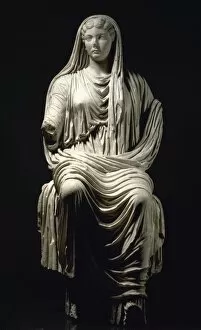Himation Collection
"Himation: Unveiling the Ancient Greek Costume" Step back in time to ancient Greece, where fashion was an art form and clothing told stories
For sale as Licensed Images
Choose your image, Select your licence and Download the media
"Himation: Unveiling the Ancient Greek Costume" Step back in time to ancient Greece, where fashion was an art form and clothing told stories. The himation, a versatile garment worn by both men and women, was a symbol of status and elegance. This Roman statue of Livia Drusilla showcases her draped in a luxurious himation, highlighting its importance in society. Delve deeper into history with this Attic black-figure cup adorned with a captivating Gorgon's-head tondo surrounded by six reclining men attending a symposium. Created around 500 BC by the Andocides Painter, it offers us a glimpse into the social gatherings where such garments were proudly displayed. The Reed Painter's lekythos (oil jar), dating back to 410-400 BCE, reveals intricate details of figures wearing himations while engaging in daily activities. It serves as evidence that these garments were not only reserved for special occasions but also part of everyday life. Explore further with the oinochoe (pitcher) created by the Painter of Naples 3136 around 440 BCE or the column-krater (mixing bowl) crafted by the Painter of London E 489 about 450 BCE. These exquisite pieces showcase scenes from mythology and daily life, all featuring individuals elegantly draped in their himations. Witness the craftsmanship of artists like Orchard Painter, Florence Painter, and Syriskos through their masterpieces - hydria (water jar), column krater (mixing bowl), and stamnos (mixing jar). Each piece tells its own story through intricately painted scenes depicting people donning their beloved himations. Lastly, marvel at this Roman fresco fragment capturing fragments of ancient life preserved on plaster. Though faded over time, we can still discern hints of flowing fabric reminiscent of those iconic Greek garments. Intriguingly timeless yet firmly rooted in ancient traditions.

